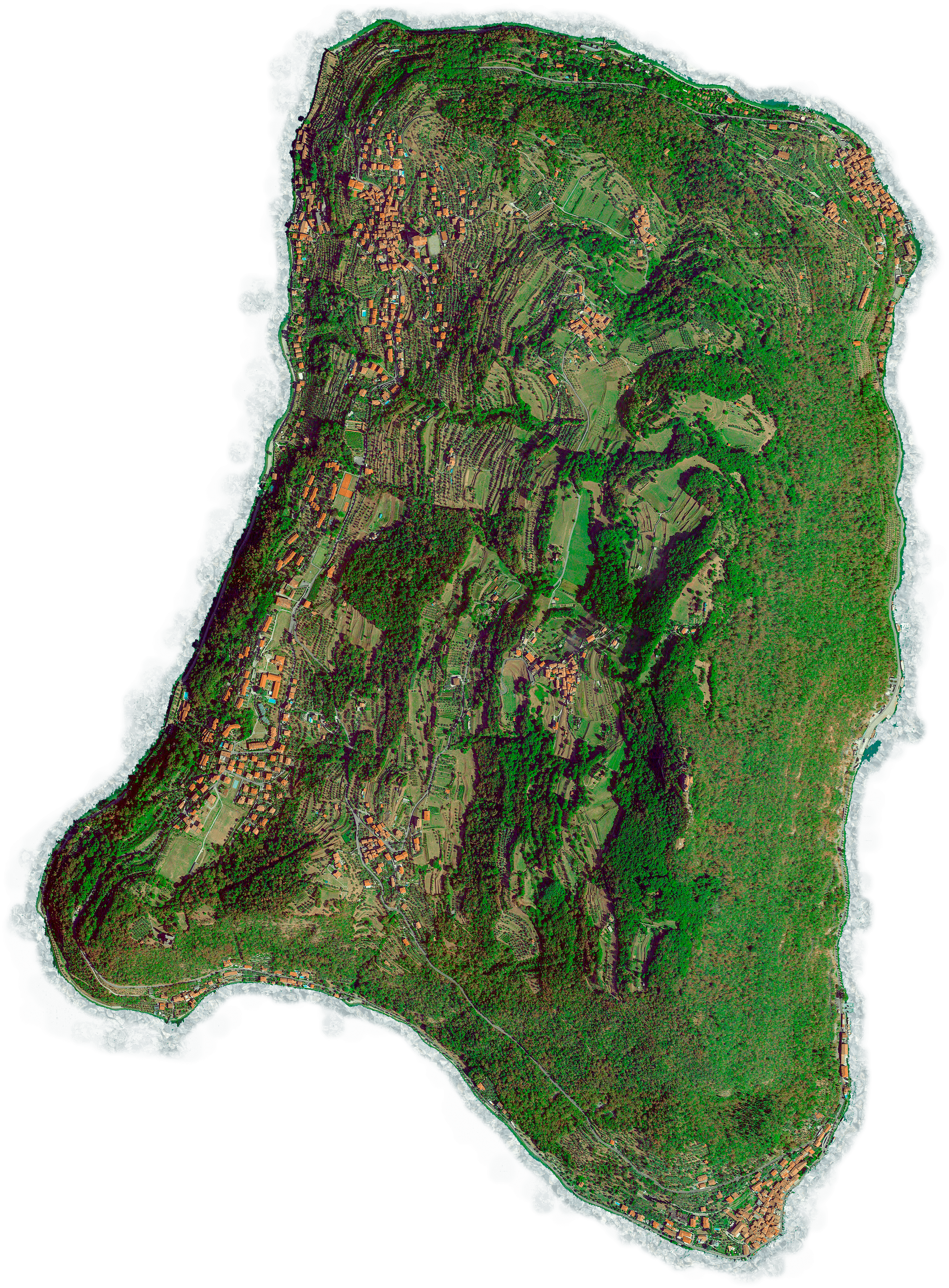


Products of the land and the lake born from the experience of processing local fruits are the protagonists of this itinerary of taste. A journey marked by tradition, quality and passion handed down from generation to generation.
Products of the land and the lake born from the experience of processing local resources are the protagonists of this itinerary of taste. A journey marked by tradition, quality and passion, handed down from generation to generation.
In Peschiera and Carzano, the tradition of drying, salting, and preserving fish in oil has continued for centuries, especially lake sardines and chub. It is a technique born in the past to preserve excess fish, that nowadays has become a peculiarity of the island’s cuisine and a Slow Food presidium.
Olive growing has been present on Monte Isola since ancient times. Leccino, frantoio, pendolino and sbresa are the main cultivated varieties. From their olives a golden yellow oil with a fruity, slightly bitter, and spicy aroma is produced, which can be found in the shops selling typical products on the island, or at the farms themselves.
Photo by: Linoolmostudio.it
Agriculture is an active part of the economic life of the island; in fact, the people who live halfway up the coast and, on the mountain, have always cultivated small plots of land. The mild climate of the island allows the cultivation of olive trees, vines, small fruits and saffron. Many medicinal herbs grow spontaneously, and honey is particularly valuable.
In Cure, Masse, Olzano and Senzano the main product is salami. Between December and February, each family secretly produced their own. What distinguishes the Monte Isola salami are the cutting of the meat with a knife and the smoking in special cellars called “ca del salam” (literally “the house of salami”), where a constantly lit fireplace keeps the temperature stable and gives the product its characteristic taste.
Sardines in oil with polenta, migole with polenta, baked whitefish, breaded perch, salami or soppressa with cabbage are just some of the traditional dishes.
Fruits of a poor cuisine, but with a strong taste are a must of the experience on Monte Isola, to be enjoyed by the lake or on the hill in front of an always exciting panorama.
Since ancient times, fishing has been one of the main activities of Monte Isola. The fishermen live mainly in Carzano and Peschiera and go out every day at dawn to reach their fishing area, handed down from father to son, like the boat and the equipment. Fishing takes place in the high waters of the lake, casting large nets which are recovered the following day.
In Monte Isola, the olive harvest is particularly difficult due to its morphology. The olive trees, in fact, in most cases are perched on steep and steep terraces. There are about 15,000 olive trees on the island. Once harvested, the olives are placed in crates and immediately transported to the oil mill called “La Masna dell’isola” for milling.
Products of the land and the lake born from the experience of processing local resources are the protagonists of this itinerary of taste. A journey marked by tradition, quality and passion, handed down from generation to generation.
In Peschiera and Carzano, the tradition of drying, salting, and preserving fish in oil has continued for centuries, especially lake sardines and chub. It is a technique born in the past to preserve excess fish, that nowadays has become a peculiarity of the island’s cuisine and a Slow Food presidium.
Olive growing has been present on Monte Isola since ancient times. Leccino, frantoio, pendolino and sbresa are the main cultivated varieties. From their olives a golden yellow oil with a fruity, slightly bitter, and spicy aroma is produced, which can be found in the shops selling typical products on the island, or at the farms themselves.
Photo by: Linoolmostudio.it
Agriculture is an active part of the economic life of the island; in fact, the people who live halfway up the coast and, on the mountain, have always cultivated small plots of land. The mild climate of the island allows the cultivation of olive trees, vines, small fruits and saffron. Many medicinal herbs grow spontaneously, and honey is particularly valuable.
In Cure, Masse, Olzano and Senzano the main product is salami. Between December and February, each family secretly produced their own. What distinguishes the Monte Isola salami are the cutting of the meat with a knife and the smoking in special cellars called “ca del salam” (literally “the house of salami”), where a constantly lit fireplace keeps the temperature stable and gives the product its characteristic taste.
Sardines in oil with polenta, migole with polenta, baked whitefish, breaded perch, salami or soppressa with cabbage are just some of the traditional dishes.
Fruits of a poor cuisine, but with a strong taste are a must of the experience on Monte Isola, to be enjoyed by the lake or on the hill in front of an always exciting panorama.
Since ancient times, fishing has been one of the main activities of Monte Isola. The fishermen live mainly in Carzano and Peschiera and go out every day at dawn to reach their fishing area, handed down from father to son, like the boat and the equipment. Fishing takes place in the high waters of the lake, casting large nets which are recovered the following day.
In Monte Isola, the olive harvest is particularly difficult due to its morphology. The olive trees, in fact, in most cases are perched on steep and steep terraces. There are about 15,000 olive trees on the island. Once harvested, the olives are placed in crates and immediately transported to the oil mill called “La Masna dell’isola” for milling.

Stai utilizzando un browser obsoleto.
Il seguente sito NON è ottimizzato per Internet Explorer.
A fatal exception IE has occurred at C0DE:L05TUD10 in 0xC0DEBA5E.
oppure clicca il pulsante qui sotto:
aggiorna il tuo browser!
Your contents on
#visitmonteisola